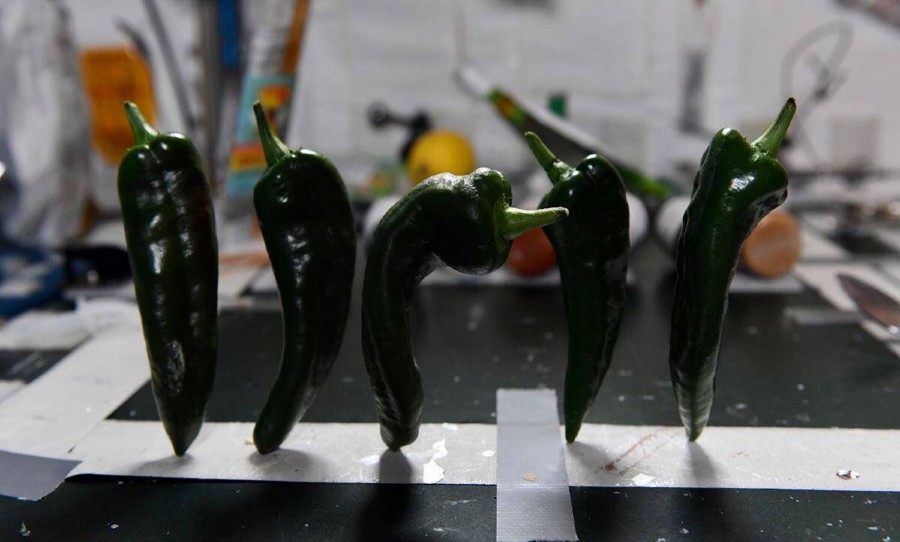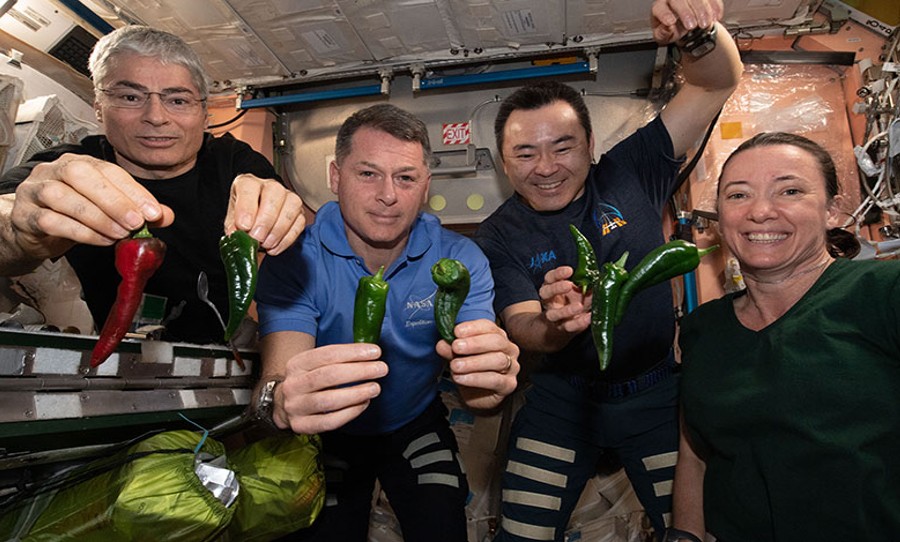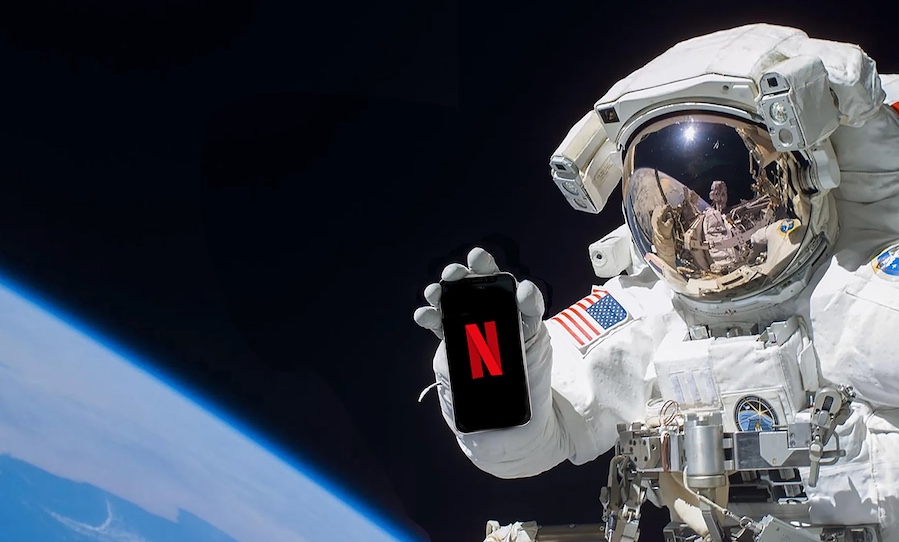Astronauts at the International Space Station have been treated to tacos for dinner, topped with fresh green chilli.
The green chillies were actually grown in space, as part of the NASA Plant Habitat-04 investigation.
Scientists started growing hatch chilli – a variety of pepper – onboard the ISS in July. The experiment is an endeavour to reveal more about plant-microbe interaction in outer space.

Other crops that have previously been grown in space include lettuce and radish. According to NASA, peppers are more difficult to cultivate given their extensive germination and fruit-bearing period.
The latest green chilli harvest is the first of its kind in space, with astronauts finally allowed to indulge last weekend. Of course, the research was completed and the data was recorded prior to the feast.
Megan McArthur was one of the astronauts involved in the process, and shared pictures of what she describes as her “best space tacos yet”.
Friday Feasting! After the harvest, we got to taste red and green chile. Then we filled out surveys (got to have the data! 😁). Finally, I made my best space tacos yet: fajita beef, rehydrated tomatoes & artichokes, and HATCH CHILE! https://t.co/pzvS5A6z5u pic.twitter.com/fJ8yLZuhZS
— Megan McArthur (@Astro_Megan) October 29, 2021
The tacos consisted of fajita beef, rehydrated tomatoes, artichokes, and the homegrown Hatch chilli.
Although the space tacos were an added bonus, the chilli experiment is all part of the grand plan to increase the number of crops astronauts can grow while on space missions.
“The challenge is the ability to feed crews in low-Earth orbit, and then to sustain explorers during future missions beyond low-Earth orbit to destinations including the Moon, as part of the Artemis program, and eventually to Mars,” Matt Romeyn, principal investigator for NASA’s Plant Habitat-04 experiment, explained in a press release.
“We are limited to crops that don’t need storage, or extensive processing.”
View this post on Instagram
Storing food in space is also not as simple as it is for us on Earth. Refrigeration is not an option, meaning most of the food taken to the space station is rehydrated – another challenge that NASA will have to overcome in the future
But for now, this is an incredible step.



